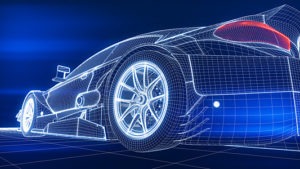\”

Everybody loves a win-win situation and today we\’ve got seven of them for you. Seven easy ways to reduce your emissions during your daily commute that won\’t involve sacrificing your current lifestyle in any way. You won\’t have to join any groups, bicycle in the snow, or sell your soul just to get a decent seat on the bus/train. While not all of these will bring a huge reduction in the emissions output of your vehicle, together you could be talking several thousands of pounds in reduced CO2 over the course of just one year. Let\’s start with some of the smaller tips and end with the most substantial.
Contents
- Use Parallel Parking
- Use More Right Turns
- Reduce Engine Idle Time
- Turn Your Air Conditioner off Before You Get Where You're Going
- Switch to Four Day Work Week
- Slow Down and Smell the Flowers
- Switch to a Toyota Prius
7: Use Parallel Parking
Emission Reduction: 5 pounds of CO2 every 10 minutes it takes to find another parking space. This often forgotten skill is an easy way to slash five to ten minutes off your daily city jaunts if you are lucky enough to find a space. Too often people drive around looking for the best deal on parking lot fees or an easy pull-in parking spot, when they could just pull into a convenient parallel space on the street and feed the meter.
6: Use More Right Turns
Emission Reduction: Several hundred pounds of CO2 over the course of a year. It makes complete sense if you think about it. Turning right is often the easiest, quickest, and most convenient way to get around the city under the current U.S. rules of the road. It involves less wait, you don\’t have to worry about oncoming traffic (although you do have to watch for pedestrians), and you don\’t have as strict of traffic light rules to obey (unless you see the sign: "No Right On Red").
5: Reduce Engine Idle Time
Emission Reduction: 220 (4-cylinder) to 440 (8 cylinder) pounds of C02 a year for reducing just five minutes of idle time each day. The next time you are waiting for a train, dropping a friend off, or sitting in an unmoving traffic jam, shut your engine down until you\’re ready to go again. According to the EPA, the breaking point where idling time uses less gas than restarting your vehicle is around one minute. The Ford Eco-driving program in Europe claims just 20 seconds. Whether it is 20 seconds or one minute is arguable, but the point is, there is a lot of unnecessary idling going on these days when people are not going anywhere.
4: Turn Your Air Conditioner off Before You Get Where You're Going
Emission Reduction: Several pounds of CO2 over the course of a year. The extra gas used for your running the air conditioner on your vehicle does account for a slight increase in emissions. For each gallon of gas a vehicle burns, it is emitting about 20 pounds of carbon dioxide. While the emissions savings in shutting off your air-conditioner is not a whole lot, I personally believe that every bit counts. In order to follow this tip, you simply turn off your air conditioner, somewhere around five to ten minutes before reaching your destination. Leave your fan on if you like, as the charge from your air-conditioner will hold for a few minutes allowing cool air to continue to circulate. You will reduce emissions, save gas, and become more acclimated to the outside temperatures before you exit your vehicle. Talk about a win-win-win.
3: Switch to Four Day Work Week
Emission Reduction: 3,000 metric tons per week statewide, if adopted by 20 percent of companies.Many companies are loosening their ties to the traditional five day work week and allowing their employees to adopt a four week schedule where appropriate. Instead of going to work for an eight hour shift, you go for ten, and then get a three day weekend. Many companies are seeing the benefits of boosted employee morale with such programs and may consider it as a possibility if you only take the time to inquire about it.
2: Slow Down and Smell the Flowers
Emission Reduction: 20% of your vehicle\’s current carbon footprintIt is amazing to me that by just slowing down and driving moderately, we can reduce our vehicle\’s carbon footprint by up to 20 percent. Such a step involves linking your brain, brake, and accelerator together. This is referring to becoming completely aware during your daily commute. Remember that accelerating moderately and braking minimally will reduce you engine\’s output significantly, as will anticipating changes in traffic. Being aware of traffic and when you may need to stop will minimize the all-too-common stop and go (pound accelerator/slam brake) tendency of city driving.
1: Switch to a Toyota Prius
Passenger vehicles account for 62 percent of all greenhouse gas emissions in the U.S. The average vehicle spews out more than 8,000 pounds of CO2 each year for every 12,000 miles it travels. While the future is looking bright for increased efficiency vehicles, right now it is hard to beat a hybrid Toyota Prius at 46 mpg. And if you think that an economical vehicle like the Prius will be roughing it, you really have not been for a ride in one recently. We are talking about such amenities as smart entry and push-button start (unlock and start vehicle without using key), DVD-based navigation, back-up camera, premium audio in-dash entertainment center (9-speakers), 4-way adjustable bucket seats, automatic air conditioning, rear adjustable headrests, power door locks and windows, and tilt steering. All this, and they start at around $6,000 for a used 2001 model. Not all the above mentioned amenities were around in the earlier models, but the used Prius still can achieve over 45 mpg with practically one tire tied behind its trunk!
Lots More Information
Related Articles
- How much pollution comes from cars?
- Biofuels vs. Fossil Fuels
- Driving On Air: The Cleanest Car Around












